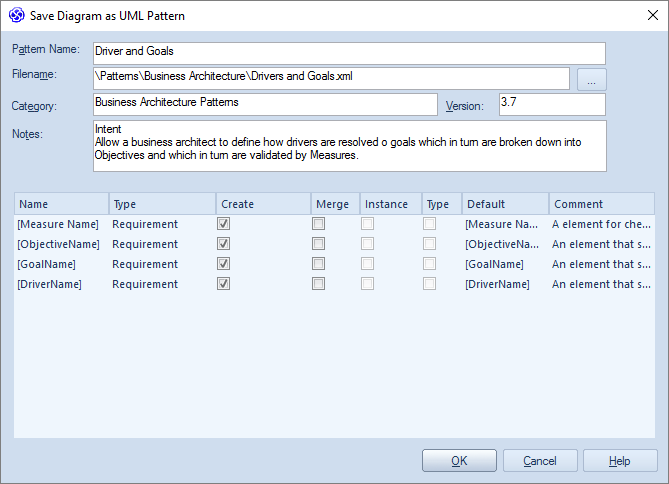| Prev | Next |
Patterns
Getting to know Patterns
Aspect |
Description |
|---|---|
|
Introducing Patterns |
A Pattern is a general reusable design solution to a commonly occurring problem within a given architectural context. Patterns are not resolved designs, but rather templates for how a problem can be solved. The concept originated in the building architecture world and was first published in a book by Christopher Alexander entitled Design Patterns. They were then applied to the software industry and were used extensively by the software engineering domain to solve commonly recurring software engineering problems, even though on the surface the nature of the problems seemed quite different.
|
|
Where to find Patterns |
Create a Pattern: Specialize > Technologies > Publish > Publish Diagram as Pattern
Use a Pattern: Start > Explore > Browse > Resources > Patterns <pattern group> > Right-click on Pattern name > Add Pattern to Diagram |
|
Usage of Patterns |
Patterns can be applied in a wide range of situations from business to technology architecture, but are always used to apply a common solution to any number of problems or contexts that on the surface might appear quite different. Enterprise Architect has provided a useful mechanism for mining Patterns, which means that any diagram can be published as a Pattern and then reused in the same or a different context. An example of a Pattern and its usage might be a Pattern articulating the relationship between Drivers, Goals, Objectives and Measures. An existing diagram could be published as a Pattern and then any business architecture could reuse the Pattern by simply dragging it onto an empty diagram. |
|
Options for Patterns |
Patterns are most commonly available from the Resources window but are also sometimes built into technologies and made available from a Toolbox page. There are a number of options available when publishing a Pattern, including the ability to describe the details of the Pattern overall and to include notes for each of the elements that make up the Pattern.
|
Learn more about Patterns



